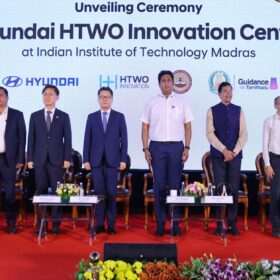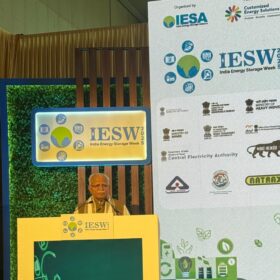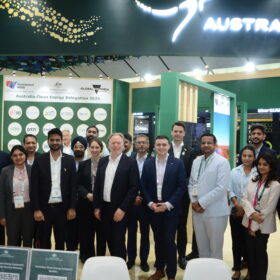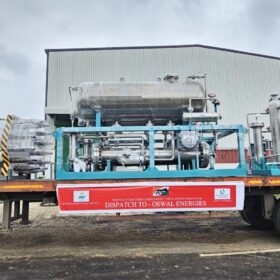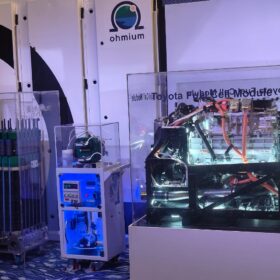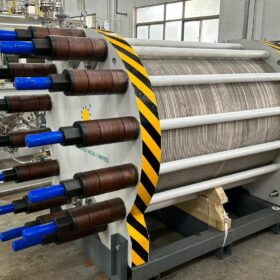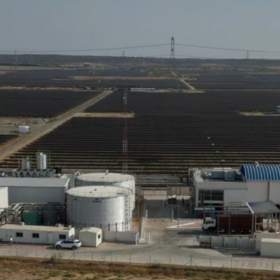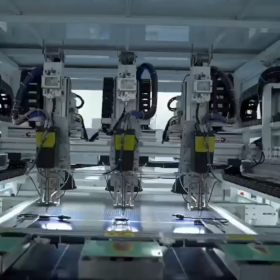Australia’s green hydrogen plan faces water shortage
Green hydrogen is touted by some as the future – a way for Australia to slowly replace its reliance on fossil fuel exports. The energy-dense gas has the potential to reduce emissions in sectors challenging to decarbonise, such as steelmaking and fertiliser manufacturing.
The Hydrogen Stream: IIT Madras, Hyundai to launch green hydrogen innovation centre
Hyundai Motor India Ltd (HMIL), in collaboration with IIT Madras, will establish a 65,000 sq. ft. green hydrogen innovation centre in Chennai, enabling research, development, and deployment of hydrogen technologies.
“India on track to achieve 50% renewable energy milestone by year-end”: Union power minister
“India is on track to achieve the milestone of 50% renewable energy share in its total installed power generation capacity by the end of the year,” said union power minister Manohar Lal Khattar at the 11th edition of India Energy Storage Week (IESW) 2025.
Australian Clean Energy delegation visits India to further deepen their engagements
A 30-member Australian Clean Energy Delegation representing 22 companies, is visiting India from July 7 – 11, 2025 to showcase Australia’s innovative solutions across energy storage technologies, AI solutions for energy operations, solar technologies, green hydrogen, energy modelling and weather forecasting, education & capacity building and consulting.
Powering a greener future through India’s clean energy transition
As India adds more intermittent renewables like solar and wind to its energy mix, modernising the electricity grid becomes a priority. Grid expansion, integration of battery storage systems, and digital monitoring tools are critical to accommodate fluctuations in generation and demand.
Oswal Energies receives first hydrogen electrolyser dispatch from Greenzo Energy for INR 320 crore green hydrogen project
Oswal Energies Ltd has received the first 1 MW electrolyser stack from Greenzo Energy India Ltd, marking the operational launch of its INR 320 crore green hydrogen project.
The Hydrogen Stream: Toyota Kirloskar, Ohmium to co-develop green hydrogen microgrid solutions in India
The partnership will explore scalable and cost-effective green hydrogen microgrid solutions by combining Toyota’s expertise in proton exchange membrane (PEM) fuel cell technology with Ohmium’s modular and high-efficiency PEM electrolyzer systems.
Greenzo secures INR 320 crore order for 20 MW green hydrogen project
Greenzo Energy India has secured an INR 320 crore order from Oswal Energies to supply electrolysers and balance of plant (BoP) equipment for a 20 MW green hydrogen facility.
Adani commissions off-grid 5 MW green hydrogen plant
Adani New Industries Ltd (ANIL) has launched a 5 MW green hydrogen pilot plant in Kutch, Gujarat. Powered entirely by solar energy and backed by battery storage, the plant runs fully off-grid, marking a new step in decentralized, renewable hydrogen production.
Monetizing hydrogen and green infrastructure in emerging markets – an EPC perspective
Emerging markets face significant obstacles in the production of green hydrogen, primarily high production costs and limited access to funding. It is crucial for firms to establish strong financial structures to ensure the success of their projects.

